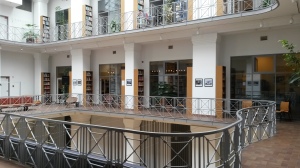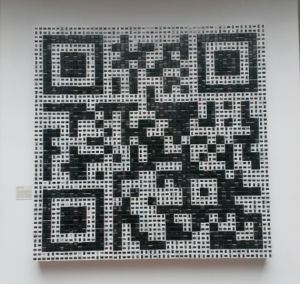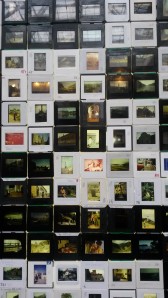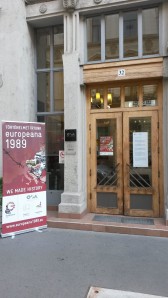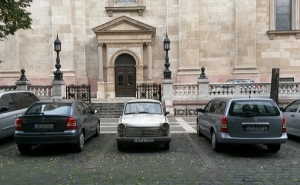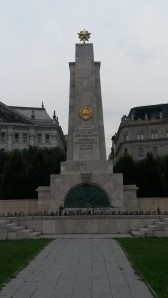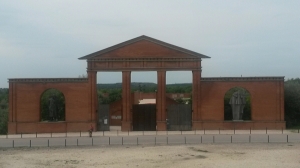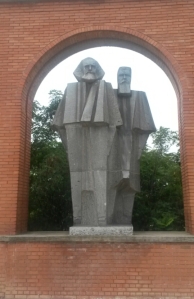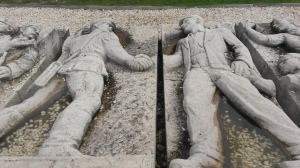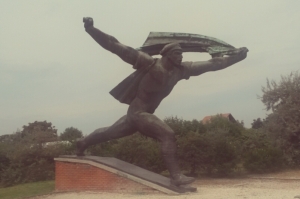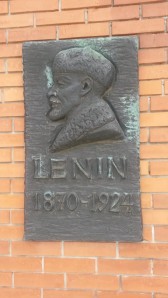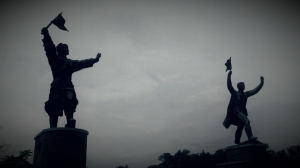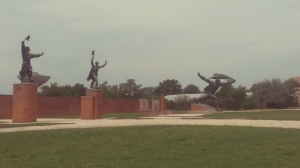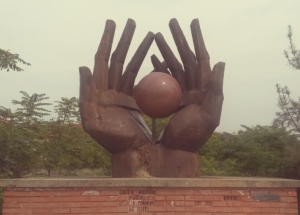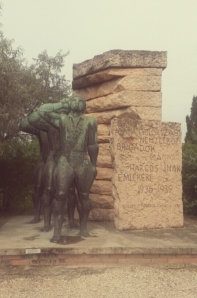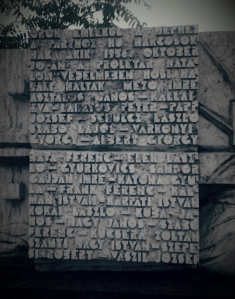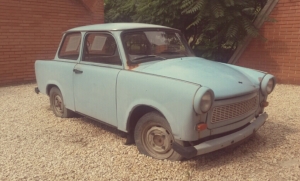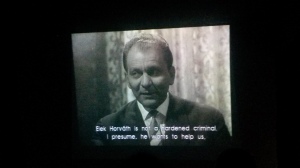Traces of Communism in Budapest
I spent the first week of September in Budapest, on the first leg of a research trip funded by the Centre for Culture and the Arts at Leeds Metropolitan University. While I was in Budapest, I spent most of my time researching at the Open Society Archivum. I really can’t recommend the OSA highly enough. They have some fantastic Cold War-related collections, the archivists were friendly and helpful, and the open access ethos means they are generally happy for researchers to take digital copies for research purposes. This was really helpful for me, as working in a second language (in this case, translating documents from Czech to English) slows down the research process considerably, which can be frustrating when you have large amounts of information to get through in a limited time frame. So it was great for me to be able to quickly scan reports to ascertain their relevance and then take copies of the most relevant information that I could keep, to read through properly and develop for my research project at a later date.
Despite a very productive week which turned up some fantastic information for my current research project relating to terror and repression in communist Czechoslovakia, I left already thinking about future visits, having identified several additional collections that I plan to return to OSA to view!
In addition to focusing on my own research, I attended two interesting events during my week at the OSA. Firstly, I was able to attend the opening of a new art installation, ‘QR Code’ by Gergely Barcza. This 3 sq metre display consists of 2.916 slides, capturing the life of a family over a 20 year period in communist Hungary (1970s-80s). The montage is deliberately arranged into a giant QR code, which can be read by a smartphone, and links to the project’s facebook page, containing the individually digitised images:
If, like me, you’ve ever looked through old photographs at flea markets or second hand stores, and wondered about the people in the photographs and what became of them, then Barcza’s project will strike a chord with you. The photomontage not only showcases private family memories, but also encapsulates Hungarian society in the 1970s and 80s, and poses some interesting questions about methods of visually documenting human life, in both the past and the present:
I was also excited to discover that the team from the Europeana 1989 project were visting the OSA while I was there. Their team travel around former East bloc countries collecting personal memories, stories, objects and memorabilia relating to the revolutions of 1989, to add to their online collection. I think Europeana 1989 is a wonderful initiative, and have been following their Twitter account for a while now, so it was really great to have the chance to meet some of the team and find out a bit more about the project. You can check out their main website here.
As the OSA was closed over the weekend, I had some free time to see a bit more of Budapest before travelling on to Prague. Today Budapest is a thriving, cosmopolitan city. But twenty-five years after the collapse of communism, reminders of the communist legacy can still be found throughout the city:

Statue of ill-fated communist leader Imre Nagy, executed for his role in the 1956 Revolution, in central Budapest.
I also took the opportunity to visit Memento Park, an open air museum on the outskirts of Budapest, dedicated to the display of some of the most striking communist-era monuments which were removed from the City after 1989. Ákos Eleőd, the Hungarian architect who designed the park is said to have remarked that “This park is about dictatorship. And at the same time, because it can be talked about, described, built, this park is about democracy. After all, only democracy is able to give the opportunity to let us think freely about dictatorship.”
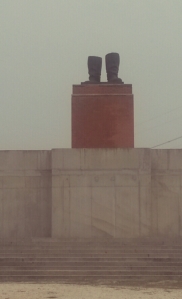
‘Stalin’s Boots’ – just outside the entrance to Memento Park stands a replica of the grandstand in Budapest which once held an 8 metre tall bronze statue of Stalin. The statue was sawn off at the knees and torn down during the Hungarian Revolution of 1956. Only Stalin’s boots remained.
The moving poem ‘One Sentence About Tyranny’ by Hungarian poet Gyula Ilyes is also displayed at the entrance to Memento Park. You can read an English translation of the poem here:
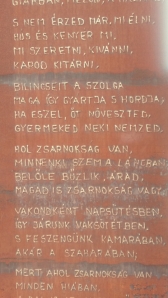
Gyula Illyés’ poem, ‘One Sentence About Tyranny’ is also displayed in full at the entrance to Memento Park.
One inside the park, you are free to wander around and view the 42 communist-era statues on display. Guided tours are also available. Here are just a few photos of some of the many striking exhibits:
Other exhibits at Memento Park included an old Trabant and film footage from ‘Life of an Agent’, depicting secret police training methods in communist Hungary:
I also visited Terror Haza (House of Terror), a rather sobering museum that documents the experiences of both fascism and communism in Hungary. Located at 60 Andrassy Ucta, the former police headquarters of both regimes, Terror Haza has been criticised for focusing on the imposition of external terror, and ignoring the question of Hungarian collaboration. However, the displays were interesting and visually striking – I found the footage recounting the experiences of some of the victims of both regimes that plays on screens at various points around the museum (in Hungarian, but with English subtitles) particularly effective:
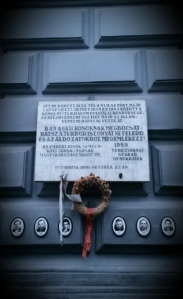
Memorial plaque to the victims of terror, outside Terror Haza. Pictures of several victims are studded into the brickwork around the building.

TerrorHaza documents life under the fascist Arrow Cross and the post-WWII Communist regime in Hungary.

“We Made It Happen” – poster commemorating the 25th anniversary of the fall of communism in Hungary.
Whilst in Budapest, I also gave an interview to The Budapest Times, discussing the legacy of communism, post-communism, contemporary developments in Hungary and Ukraine and the impact of EU expansion, which has now been published on their website here.
Finally, you can see more of my photos from Budapest, and from my visit to Memento Park over at my personal blog Kelly and Kamera.
-
Archives
- November 2016 (1)
- March 2016 (1)
- July 2015 (4)
- November 2014 (2)
- October 2014 (1)
- September 2014 (1)
- June 2014 (1)
- February 2014 (1)
- December 2013 (1)
- October 2013 (2)
- August 2013 (2)
- July 2013 (1)
-
Categories
-
RSS
Entries RSS
Comments RSS
